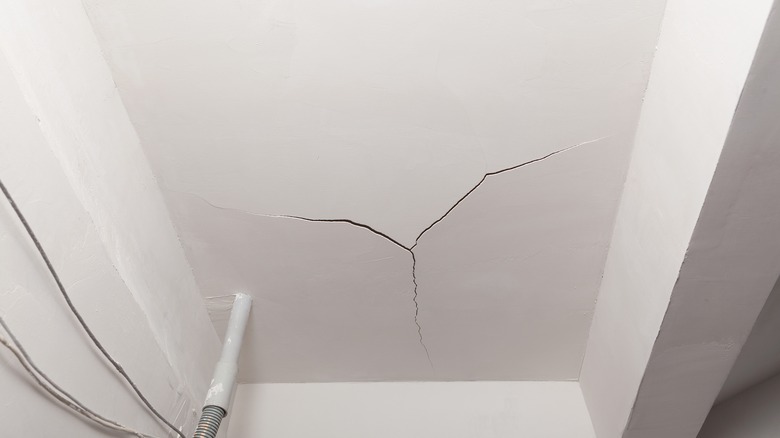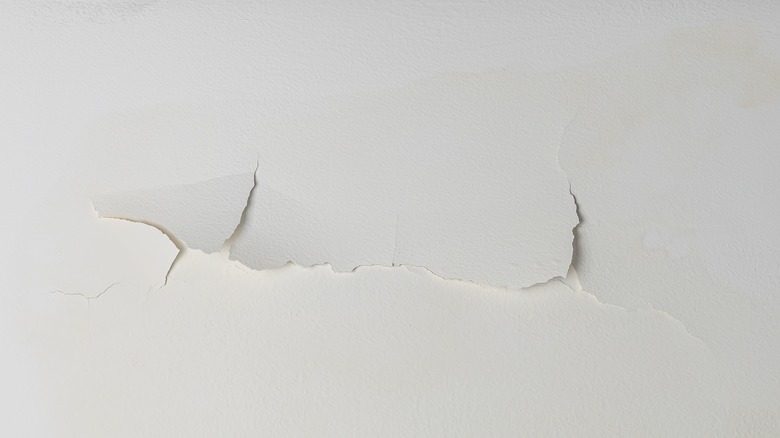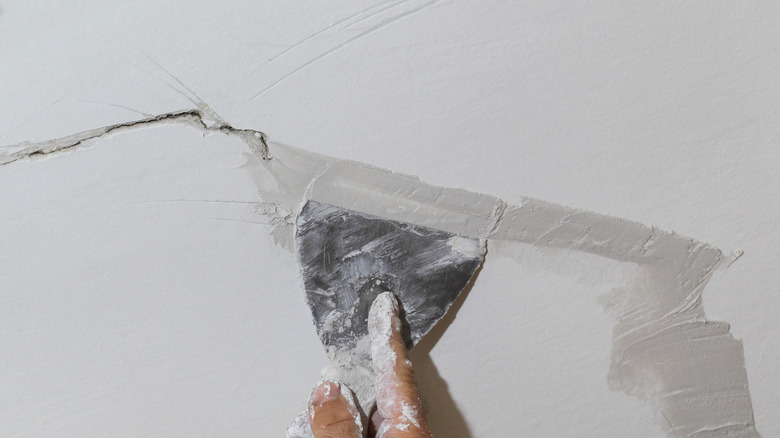What The Crack In Your Garage Ceiling Really Means
As your home ages, you may notice problems with cracks in the drywall in your walls and ceilings, including in the garage. But when should you start worrying about these cracks? This type of damage sometimes indicates structural problems in your home, so you shouldn't just ignore it and hope that it alleviates itself. However, it also could simply show that significant temperature and humidity variations in the garage — a room that likely doesn't have temperature controls like the rest of your home does — are causing the framing and the drywall to expand and contract, resulting in the cracks. A crack may also indicate that the drywall installer did a poor job, leading to extra stress on the material that shows the damage.
Another potential cause for the cracks in your ceiling's drywall is if the builder installed the joists farther apart than is normal — perhaps 24 inches apart, which is greater than the standard of 16 inches apart used for framing in walls inside the home. Using ceiling joists set 24 inches apart saves money on materials and on labor costs for the builder, but it means these joists must each carry 50% more load than what they carry when spread at 16 inches apart. This could lead to cracks forming when the structure gets placed under stress of the ground shifting or extreme weather.
When to be concerned about ceiling cracks
Generally, small cracks in your garage ceiling are not indications of significant problems. But you need to pay attention to the size and location of this damage, as these clues can help you decipher when you should worry and when you should simply monitor the damage for changes over time.
If the cracks are tiny and thin — and there aren't very many of them — these often indicate normal shifting of materials from humidity and temperature variations. You can usually keep an eye on this type of damage without having to worry about major structural damage — though, of course, it's always best to get a professional consultation if you're uncertain. Take a picture of the damage alongside a ruler, coin, or another item that's helpful for perspective, then set yourself a reminder to take more photos of the crack every few months later for comparison. If you notice that the cracks are becoming longer and wider, you may want to call a pro.
You're likely seeing a sign of major trouble if the cracks are about 1/8th of an inch in width or wider, continue toward or onto the walls, or show signs of sagging or water damage (per Epps Foundation Repair). It's definitely time to call a professional to do an inspection and make recommendations about any required repairs to shore up the structure; you don't want to risk the space becoming prone to mold or even completely unsafe for use.
Can you fix cracks in your garage ceiling yourself?
If you have cosmetic hairline cracks that are 1/16th of an inch or smaller in width and no other signs of more serious problems — or a professional has confirmed that your cracks are simply due to minor issues like peeling tape on a drywall seam — you can often fix these items on your own, if desired. A small tub of premixed drywall spackle or compound at Lowe's will set you back about $10. Rather than having to mix a large volume of compound by purchasing a bag of dry powder, this product is easy to use and causes the least mess. Use a putty knife (about $5 at Lowe's) to cover the crack with a thin layer of compound, then sand it gently after it dries to smooth it out.
For larger cracks in the ceiling, significant damage that indicates a water leak, or even just uncertainty about a smaller crack, hire a professional such as a drywall repair person or a general contractor to inspect your garage for more serious damage. A basic ceiling repair from the pros could be as low as $400, but if you need a larger structural repair, you could pay upwards of several thousand dollars — though, of course, the potential risks of severe structural damage could cost you far more.



